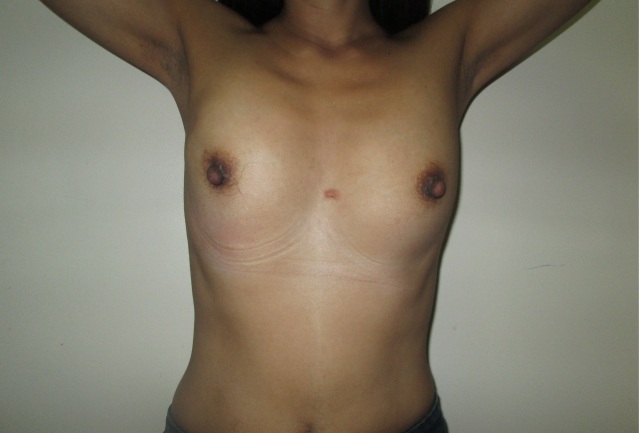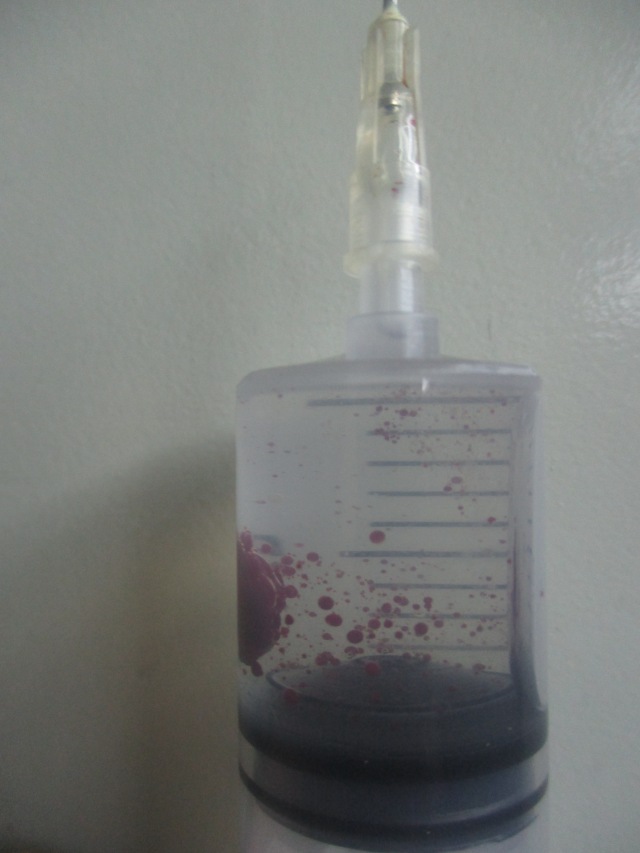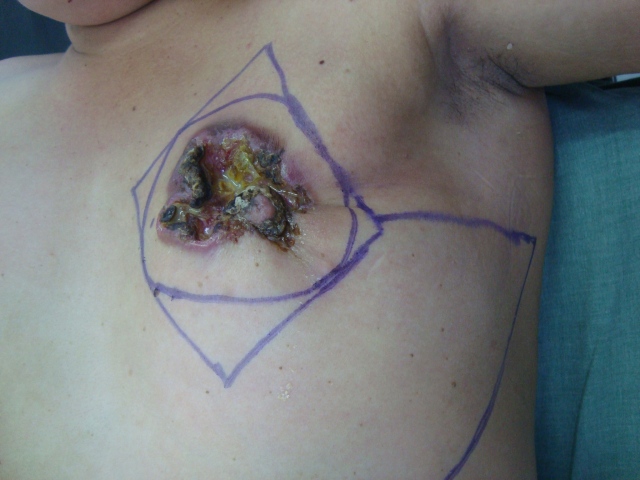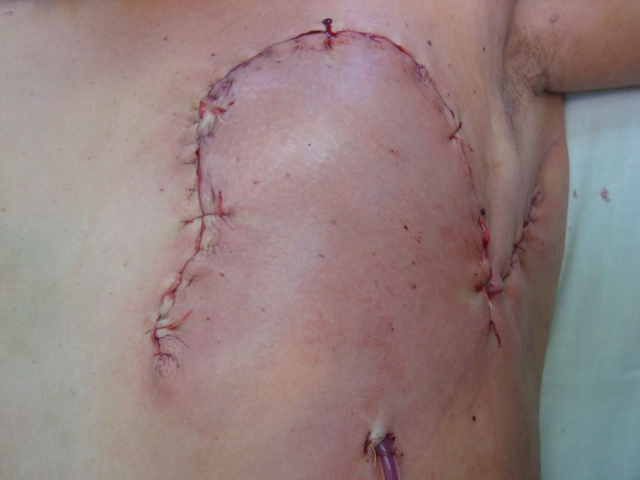Keloids and Mastectomy Incision Planning
The situation of the keloids in the sternal area that may influence the direction of the elliptical mastectomy incision:
“Keloids can crop up anywhere but do so most easily on certain areas, such as the skin around the upper chest and shoulders – particularly over the breastbone (sternum) – and on the earlobes.”
http://www.bad.org.uk/site/834/default.aspx
Sites for keloid formation: the most common areas are the sternum, shoulder, earlobe and cheek.
http://www.patient.co.uk/doctor/Keloid-Scars.htm
· Al-Attar A, Mess S, Thomassen JM, et al; Keloid pathogenesis and treatment. Plast Reconstr Surg. 2006 Jan;117(1):286-300.
· Leventhal D, Furr M, Reiter D; Treatment of keloids and hypertrophic scars: a meta-analysis and review of the literature. Arch Facial Plast Surg. 2006 Nov-Dec;8(6):362-8.
Certain areas of the body such as the sternum, deltoid region of the upper arm, and upper back, have increased susceptibility to keloid formation.
http://emedicine.medscape.com/article/876214-overview#aw2aab6b3
Based on the above situations, the risk for keloid in mastectomy scars is at least theoretically higher in those incisions that approach the sternal area, particularly the upper part. Thus, a recommendation will be to avoid this area and place the medial part of the mastectomy incision on the lower part of the sternum. Thus, an oblique elliptical mastectomy incision should be preferred over a transverse elliptical mastectomy incision if the risk of keloid formation is to be avoided. (Note: Above statements have to be validated with a clinical research.)
Note: Other factors have to be considered before deciding on the direction of the mastectomy incision.
Pictures of patients with keloid on the sternum.

Keloids before modified radical mastectomy for breast cancer on the left.

A month after the mastectomy using an oblique mastectomy incision.

Another patient with bilateral modified radical mastectomies. Note the hypertrophic scars to keloid formation.

Right mastectomy scar.

Left mastectomy scar. Note the greater keloid formation near the sternum.

Patient with left breast cancer with sternal keloid.

Right after modified radical mastectomy using an oblique mastectomy incision.

Oblique mastectomy incision scar. Note the hypertrophic scar on the medial side.

Transverse mastectomy incision. Note the hypertrophic scar on the medial side.

Closer-view of the transverse mastectomy incision scar with hypertrophic scar on the medial end.

A fine oblique mastectomy incision scar.

































